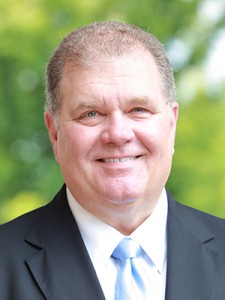By Randy C. Davis
TBMB President & Executive Director
 It’s been a long few months, but hey, rejoice! You’ve made it through the, “Stay at home” order.
It’s been a long few months, but hey, rejoice! You’ve made it through the, “Stay at home” order.
Now that we have started regathering for worship, churches are experiencing a plethora of emotions somewhere between jubilation and disappointment.
People are glad to see each other but disappointed their entire congregation can’t return just yet. In-person worship attendance in many churches is running between 30-70 percent of pre-COVID crowds. That is to be expected and pretty good, all things considered. Inhospitable restrictions, no childcare in most instances, elderly and vulnerable encouraged to stay home, and few small groups physically meeting. And then there is the whole, “I’ve gotten used to being in my PJs for virtual worship” habit.
While the past 100 days have been difficult on many fronts, it has also stretched the local church to minister creatively like we’ve not seen in a generation.
So, what about the next 100 days? Whether a pastor, ministry leader, or church member, your greatest challenges — and greatest opportunities — may be just ahead of you. Here are a few suggestions as you move ahead.
(1) Keep praying. Seek God’s face and ask for abundant wisdom and clear direction. As you and your congregations give time, energy and focus to serious prayer, God gives you confidence and courage.
(2) Anchor to the mission, vision and core values of your church. What you believe biblically must guide how you behave practically. Your “why” is far more important than your “how.” The clearly stated mission of your church provides strong guidance.
(3) Determine and prioritize the two to five objectives your church needs to accomplish over the next 100 days. Nothing is more helpful and hopeful than aiming at a target. It gives strength to, as Paul said, “press toward the mark.” One hundred days isn’t long, so keep it simple and keep the list of “big rock” priorities short.
(4) Capture and enhance what you’ve learned over the last 100 days. What needs to continue? For instance, keep calling, texting, and e-mailing every member of your church in a personal way. Or maybe you need to enhance your virtual worship presence and normalize team or committee meetings via Zoom or another virtual format to increase efficiency.
(5) Focus on compassion ministries in your community that results in evangelism and disciple-making. A rapidly growing number of people are hurting spiritually, mentally and financially. They need help. Tennessee Baptists also have in our DNA an unshakable desire and demonstrated record of sending missionaries and supporting North American and global missionary enterprises. However, a healthy Acts1:8 missiological strategy begins with the local church’s mission field. British missionary Charles T. Studd said, “The light that shines farthest shines brightest nearer home.” Let’s be bright lights.
(6) “When the horse is dead, get off.” Baptists have a bad habit of never having exit strategies for programs, plans, and ministries that have passed an expiration date. God is all about creative change. His Word and the gospel don’t change, but the methods of sharing His Word and the gospel do. The pandemic necessitated Ford Motor Company making respiratory ventilators instead of F150s. Whiskey distilleries (Praise the Lord!) transitioned to making hand sanitizer. What “dead horse” do you need to bury?
(7) Be prepared to pivot again should COVID-19 surge again. That’s a strong possibility according to some trusted medical experts. However, the experience you and your leadership have gleaned this spring will serve the church well. Some basics: Review and update governance documents to accommodate emergencies, have a contingency plan in place to respond should we get hit with coronavirus 2.0. Don’t get caught unprepared.
I believe the last 100 days has focused the church on its mission for the next 100 days. It’s leaner in structure, nimbler and more flexible in responding to opportunities and challenges, and sweeter in its fellowship.
I believe the best really is yet to come, which is why it’s a joy to be on this journey with you.

